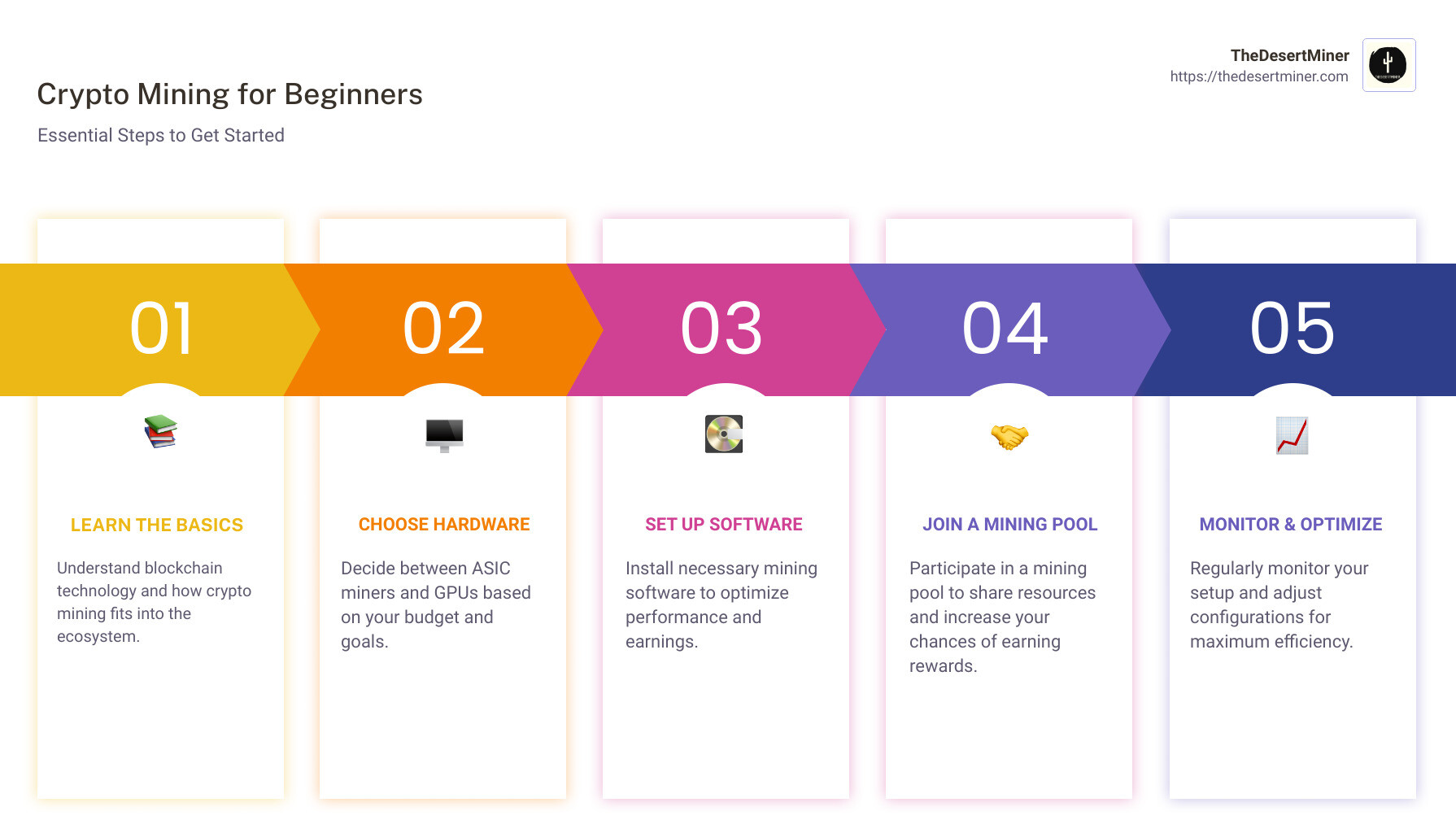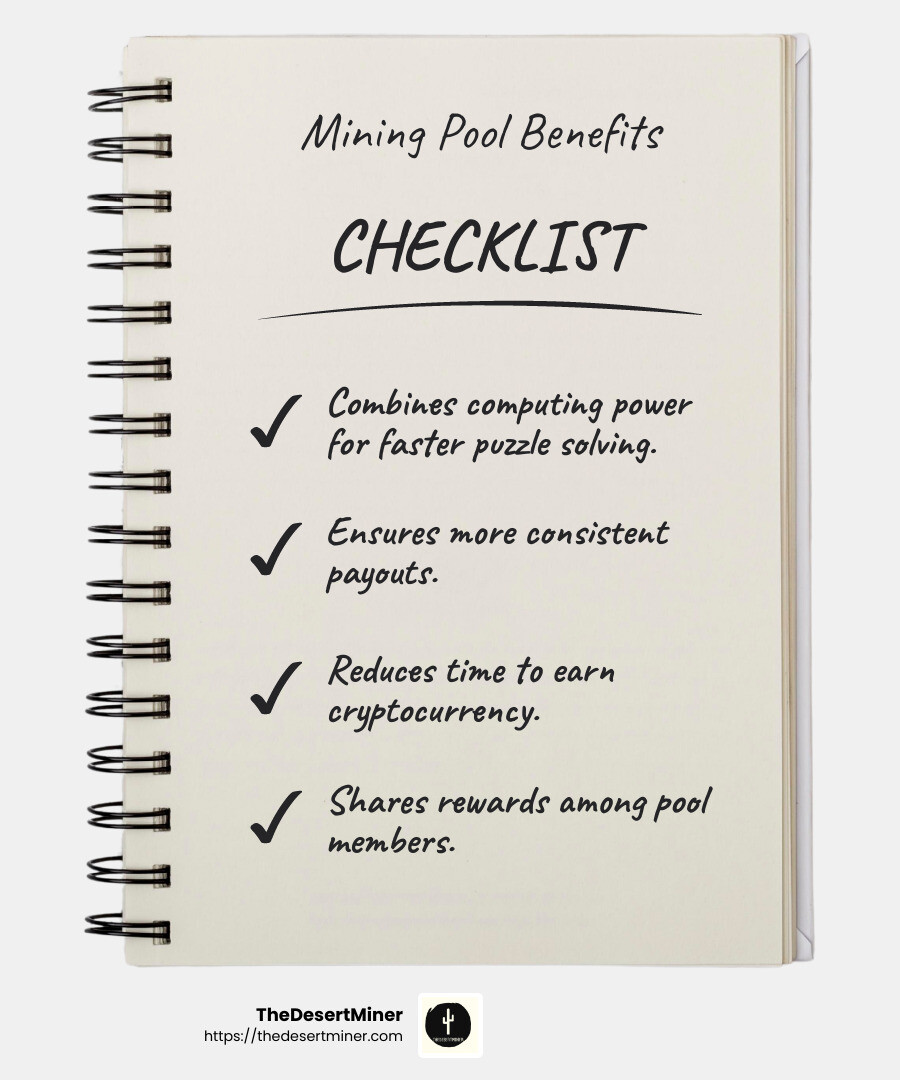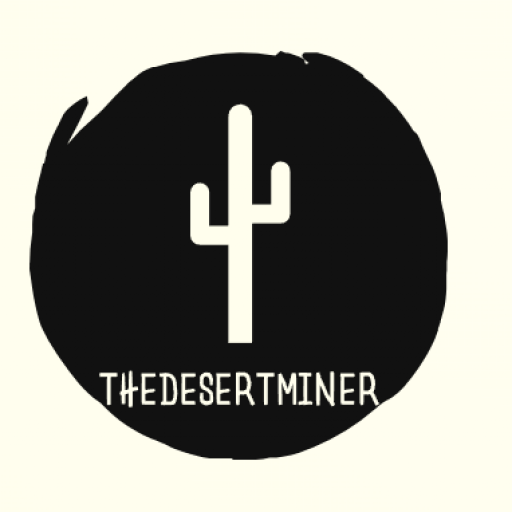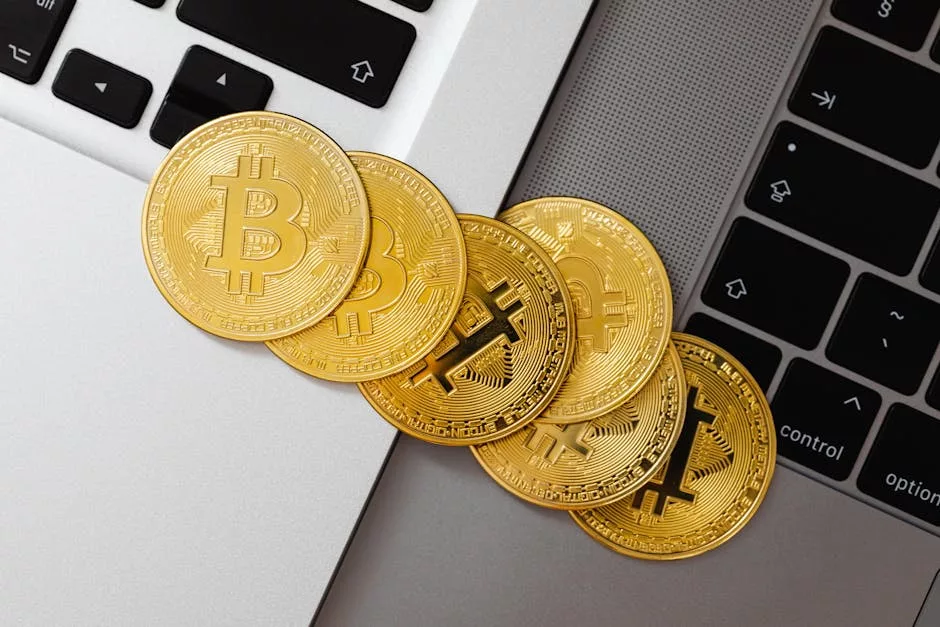Crypto mining for beginners is the process of using computers to solve complex equations, so you can earn cryptocurrencies like Bitcoin or Ethereum. At its core, crypto mining involves:
- Understanding Blockchain: The backbone of cryptocurrency, where secured transactions form “blocks,” creating a transparent ledger.
- Mining Operations: Using specialized hardware, like ASICs or setting up GPUs to perform calculations.
- Rewards System: Successfully mining a block earns you cryptocurrency as a reward.
Your computer isn’t just running numbers—it’s part of a vast network, bringing exciting tech possibilities to life!
Want to dive into crypto mining and secure your first coins? Read on to explore how to transform your home setup into a mini mining operation.
Welcome to ‘From Zero to Crypto: A Beginner’s Guide to Mining’ by The Desert Miner. My journey in crypto mining began in early 2021, with a focus on both GPUs and ASIC miners, such as the Bitmain Antminer KA3. With setups at home and offsite, I’ve combined passion with practical insights to help new miners get started.

Understanding Crypto Mining
Crypto Mining for Beginners
Crypto mining might sound complicated, but it’s all about using computers to solve puzzles. These puzzles, known as cryptographic puzzles, are essential for adding new blocks to the blockchain network. Think of the blockchain as a digital ledger—every solved puzzle helps secure and update this ledger.
When you solve one of these puzzles, you get a reward in the form of cryptocurrency. This reward system is what drives miners to keep the blockchain network secure and running smoothly.
To start mining, you need three key components:
- Mining Hardware: This is your computer or specialized equipment that performs the calculations. You can use either ASIC miners or GPUs. ASICs, like the Bitmain Antminer KA3, are designed specifically for mining and offer high efficiency. They are a popular choice for serious miners because of their power and speed.
- Mining Software: Once you have the hardware, you need software to connect your equipment to the blockchain network. This software helps your hardware solve the puzzles and communicate with other miners.
- Cryptocurrency Wallet: After earning cryptocurrency, you need a secure place to store it. A cryptocurrency wallet keeps your digital coins safe, allowing you to send and receive currency.
Key Components of Mining
Mining is not just about having the right hardware and software. It involves a few more elements to maximize your success:
- ASIC Miners and GPUs: ASIC miners are powerful and efficient, designed for specific cryptocurrencies. GPUs, on the other hand, are more versatile and can mine different types of coins. Your choice depends on your budget and mining goals.
- Mining Pools: Going solo in mining can be challenging due to the high competition. Joining a mining pool means teaming up with other miners. You combine your computing power to solve puzzles faster and share the rewards. This method offers more consistent payouts and reduces the time it takes to earn cryptocurrency.

Understanding these components is the first step in your crypto mining journey. As you gain experience, you’ll learn how to optimize your setup to get the best results.
Getting Started with Crypto Mining
Diving into crypto mining can be thrilling, but it requires the right setup and a clear understanding of costs and profitability. Let’s break down what you need to start mining effectively.
Choosing the Right Hardware
Your mining hardware is the heart of your operation—it determines how efficiently you can solve cryptographic puzzles. When choosing hardware, consider ASIC miners like the Bitmain Antminer KA3. These machines are designed specifically for mining and offer high hash rates, meaning they can solve puzzles faster than other types of hardware.
- ASIC Miners: These are highly specialized and efficient, making them ideal for serious miners. The Bitmain Antminer KA3, for instance, is a game-changer for Kadena mining due to its high performance and energy efficiency. You can learn more about it here.
- Hash Rate: This measures how many calculations your hardware can perform per second. A higher hash rate increases your chances of earning rewards, but it often comes with higher costs.
When setting up your mining rig, factor in the initial cost of the equipment and the ongoing electricity expenses. Mining can be costly, so it’s crucial to calculate your potential earnings and see how long it will take to recoup your investment.
Joining a Mining Pool
Going solo in mining can be daunting, especially with the increasing difficulty of mining puzzles. This is where mining pools come in handy.
- Shared Rewards: In a mining pool, you team up with other miners, combining your computing power to solve puzzles more efficiently. The rewards are then shared among all members based on their contribution.
- Mining Pool Benefits: Joining a pool can lead to more consistent earnings. Instead of waiting a long time to solve a puzzle on your own, you receive smaller, more frequent payouts.
- Pool Selection: Choosing the right pool is essential. Consider factors like pool size, fees, payout frequency, and reputation. Larger pools often provide more stable returns, but they might also have higher fees.
By selecting the right hardware and joining a mining pool, you can improve your chances of success in crypto mining. It’s about balancing costs with potential rewards and making informed decisions to optimize your setup.
In the next section, we’ll explore the challenges and considerations to keep in mind as you start on your mining journey.
Challenges and Considerations
Venturing into crypto mining isn’t just about setting up your hardware and joining a pool. There are several challenges and considerations to keep in mind, especially regarding energy consumption, market volatility, and legal regulations.
Environmental Impact
Crypto mining is notoriously energy-intensive. The process of solving cryptographic puzzles demands significant electricity, often comparable to the consumption of small countries. This high energy usage has sparked environmental concerns.
- Renewable Energy: Some miners are turning to renewable sources to power their operations. Using solar or wind energy can reduce the environmental footprint and potentially lower electricity costs.
- Proof of Stake: Unlike the traditional Proof of Work (PoW) system, which requires massive energy for computations, Proof of Stake (PoS) offers a more energy-efficient alternative. PoS reduces the need for power-hungry hardware by selecting validators based on the coins they hold.
Profitability Factors
Profitability in crypto mining is influenced by several factors, and understanding these can help you decide if mining is worth your investment.
- Electricity Costs: This is one of the most significant expenses in mining. The cost per kilowatt-hour can vary widely depending on your location. Miners in areas with cheaper electricity have a competitive edge.
- Market Trends: Cryptocurrency prices are volatile. The value of the coins you mine can fluctuate significantly, impacting your potential earnings. Keeping an eye on market trends is crucial for timing your sales and maximizing profits.
- Mining Calculators: To assess potential profitability, using mining calculators can be invaluable. These tools allow you to input your hardware specs, electricity rates, and other variables to estimate your earnings and determine how long it will take to break even.
Mining is a dynamic field, and staying informed about these challenges will help you steer the complexities of the crypto world.
In the following section, we’ll dig deeper into the environmental impact of mining and explore how you can mitigate your energy consumption.
For more information on efficient mining hardware, you can explore the Bitmain Antminer KA3 which is known for its performance and energy efficiency.
Conclusion
As we wrap up our exploration of crypto mining for beginners, it’s clear that the journey offers both challenges and exciting opportunities. At TheDesertMiner, we’re committed to providing you with valuable insights to steer this evolving landscape.
Crypto mining isn’t just about technical setups; it’s about understanding the broader ecosystem. As you venture into this field, consider the long-term gains. Early adopters of cryptocurrencies like Bitcoin and Ethereum found success by holding their mined tokens during market highs. This strategy, while risky, can lead to significant rewards if timed well.
Our goal at TheDesertMiner is to equip you with expert-curated content that improves your understanding of crypto mining and tech trends. By staying informed, you can make smarter decisions and potentially capitalize on future opportunities.
The key to success in crypto mining lies in continuous learning and adapting to market changes. Whether you’re exploring the capabilities of ASIC miners like the Bitmain Antminer KA3 or considering joining a mining pool, the right choices can lead to sustainable and profitable outcomes.
Stay curious, stay informed, and may your mining endeavors be as rewarding as the findies you’ll make along the way.

